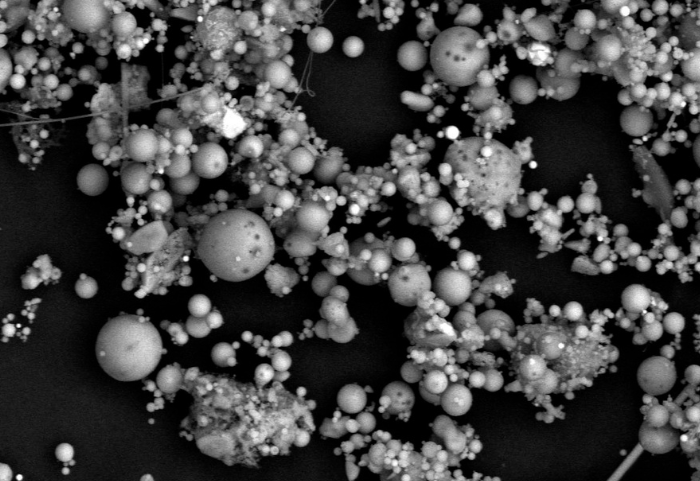Expand Your Knowledge
Our resource center archives our case studies, published articles, blogs, webinars, and image galleries. Discover ways microscopy has made a meaningful impact.

Environmental forensics is the application of scientific methods to answer questions related to the environment. These questions may require a physical, chemical or historical evaluation of a contaminant in soil, air or water. Contaminants can cause harm to the environment and to people’s health. Scientists aspire to determine the source of the contamination, the type of contamination, the amount of it, and the timing. Evaluations are done in the field and in the lab. Once a contamination source has been identified, actions can be taken to stop it.
We can determine the composition and morphology of the suspect particles and identify likely sources, whether it is soil erosion, plant pollen, fungal material, fly ash or any number of other materials. When the particles are consistent with an industrial source, we can identify likely industrial processes and compare the suspect particles to known particles from those sources.
Identifying a contaminant can help to identify its source. By recognizing the source, actions can be taken to mitigate the impact it can have on the environment and society. The information can also help industrial facilities and their neighbors resolve disputes over who or what is responsible when unknown or unusual particles appear in their environment.

Pollen Imaged by PLM
Contaminants in the environment can have a biological, chemical or physical source. The source can be natural or industrial. For example, oil spills are a contaminant with an industrial source. Oil may spill from a tanker, offshore platform, pipes, drills or wells. They can also occur on land. Oil spills have long- term disastrous effects on wildlife and vegetation. They also have an economic and health impact on people by hurting tourism, food sources, and air quality. On the other hand, toxins from algal blooms have a natural source. These toxins can be found in lakes where animals and human cans be exposed to them through activities like drinking or swimming.
Metals and minerals can also be a natural contamination if they result from weathering of rocks, volcanic eruptions or naturally occurring fires. However, if the source is a manufacturing plant or mining, they are considered industrial contaminants.
There are many techniques to characterize and identify a contaminant. Here at MVA Scientific Consultants we use microscopy and spectroscopy and apply the knowledge we have accumulated in over 35 years to help our clients.
We have experience analyzing contamination resulting from various industrial processes including burning for power generation or waste incineration, grinding, material storage and transportation.
If you have any questions about environmental forensics, please contact us at info@mvainc.com.